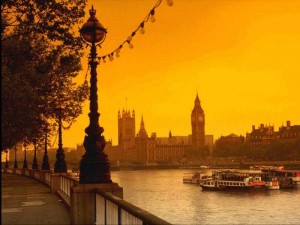We drive on left, which side do we walk on? Some friends from Australia asked BBC Home Editor Mark Easton, as they battled down London’s Oxford Street the other day, weaving our way through determined shoppers, rushing office workers and ambling tourists.
 The answer is we don’t, he says in an interesting article in the BBC magazine. “The British have little sense of pavement etiquette, preferring a slalom approach to pedestrian progress. When two strangers approach each other, it often results in the performance of a little gavotte as they double-guess in which direction the other will turn,” he says.
The answer is we don’t, he says in an interesting article in the BBC magazine. “The British have little sense of pavement etiquette, preferring a slalom approach to pedestrian progress. When two strangers approach each other, it often results in the performance of a little gavotte as they double-guess in which direction the other will turn,” he says.
“The British are ambulatory anarchists. We are oblivious to the Rules for pedestrians helpfully published by Her Majesty’s Government. There are 35 in total but, frankly, who knew and who cares?
Rule Number One tells us we must “avoid being next to the kerb with your back to the traffic” which implies we ought to walk on the left of the pavement. Such advice is blithely ignored, as any stroll down a busy high street will confirm,” the article says.
“An attempt to bring order to this chaos was suggested in 2000, amid reports of rising “pavement rage”. The Fast Lane Campaign proposed designated coloured lanes for pedestrians walking along Oxford Street in London – a fast lane for those rushing to get from A to B and a slow lane for window-shoppers and dawdlers.
“Inevitably, the idea was laughed away. One group representing the rights of pedestrians dismissed it as anathema to the anarchic spirit of British walkers. The British are bemused by countries which police pedestrians – treating those who don’t use designated crossings as criminals,” the report adds.The rule of law may be a fundamental British value, but we recoil at legislation that might impact on our right to roam free in the public realm”
“There are laws against jaywalking in the US, Singapore, Poland, Serbia, Iran, Australia and New Zealand among other countries. But in Blighty, the state leaves it up to the individual to make their own judgement. The only exception is in Northern Ireland where, occasionally, a pedestrian may be prosecuted for jaywalking if it is deemed to have caused an accident,” it says.
He argues that telling people how to walk is simply not British.
“We may have a reputation for orderly queuing but I suspect that stems from foreign bewilderment that such organised behaviour, where it still exists, is voluntary. There is no rule that says you have to line up at the bus stop. Residual affection for the queue is explained by a general belief in fair play, first-come first-served and good manners.
“The accepted autonomy of the pedestrian, free to ignore the demands of pelicans and zebras, is in contrast to views on the behaviour of cyclists. The shift from foot to wheel, from kerb to street, changes everything. The sight of a bicycle rider happily free-wheeling through a red light inspires a fury never inspired by a walker who won’t wait for the green man at the crossing.
The rule of law may be a fundamental British value, but we recoil at legislation that might impact on our right to roam free in the public realm. A sign demanding that we Do Not Walk On The Grass is often seen as an invitation for rebellion. A legacy of the enclosures which robbed people of their village greens and common land, perhaps, Brits fight for such freedoms,” he says.
“At some busy UK railway stations, I have seen one-way systems for pedestrians – staircases and walkways emphatically marked with arrows and “no entry” signs to regulate foot traffic. While tourists obediently follow the instructions, the locals seem almost to take pleasure in walking up the wrong side.
“On London tube escalators there are instructions to walk on the left and stand on the right, some with feet symbols to ensure everyone knows the form. People do obey these requests, for the most part, suggesting that different rules apply underground,” he adds.
But on the street?
He signs off saying: No, we don’t walk on the left or the right. We are British and wander where we will.